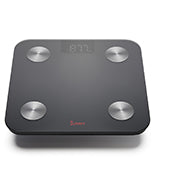When it comes to core training, many people default to well-known exercises like crunches and sit-ups. While these exercises can help strengthen the abdominal muscles, they often fall short in delivering practical strength benefits.
Functional training, on the other hand, focuses on movements that mimic daily activities and athletic performance, making it an effective way to build core strength in a well-rounded way.
By incorporating functional training into your routine, you can improve your posture, stability, balance, and overall athletic performance while reducing the risk of injury.
Let’s take a look at 5 key reasons you might want to incorporate function training into your workout routine, as well as a few exercises you can try at home.
1. Directly Transfers to Life Activities
One of the biggest advantages of functional training is its direct application to everyday movements. Unlike isolated core exercises that target only specific muscles, functional workouts engage multiple muscle groups in coordinated patterns, preparing your body for real-world tasks.
Think about how often you bend, twist, reach, or lift objects throughout the day. Functional training includes dynamic movements like squats, lunges, and rotational exercises, which enhance your ability to perform daily activities safely and efficiently. You want your core to be strong through all sorts of movements, not just when sitting up from a supine position.
For example, a traditional sit-up strengthens the rectus abdominis (six-pack muscles) but does little to help with lifting a heavy box. In contrast, exercises like deadlifts or farmer carries mimic the movement of lifting and carrying, making them more beneficial for real-world strength. Whether you're picking up groceries, playing with your kids, or carrying a heavy suitcase, a strong, functionally-trained core makes these tasks easier and reduces strain on your body.
2. Injury Prevention and Longevity
A weak core can contribute to comprised movement patterns and an increased risk of injury. Functional training enhances core stability by strengthening deep core muscles such as the transverse abdominis, multifidus, and pelvic floor muscles. These muscles play a crucial role in protecting the spine, maintaining proper posture, and reducing the likelihood of injuries.
By training your core in functional patterns, you reinforce proper movement mechanics as well as strengthen the muscles required for these movements, which reduces stress on joints and minimizes the risk of strains, sprains, and chronic pain. This is especially beneficial for older adults looking to maintain mobility and prevent falls.
3. Enhanced Stability and Balance
Stability and balance are essential for both everyday movements and athletic performance. Functional training emphasizes core engagement in multi-directional movements, challenging your balance and improving coordination.
Unlike machines at the gym that provide external support and require a fixed movement path, functional training requires your body to stabilize itself. This strengthens proprioception (your body's awareness of its position in space) and enhances your ability to maintain balance under different conditions.
This is not to say that machines at the gym have no place in a fitness routine – they absolutely do. When rehabilitating an injury, more controlled movements can be crucial for rebuilding muscular strength while minimizing strain and impact.
For example, someone who just had knee surgery might benefit more from using the quad extension machine before progressing into a squat. Functional training and isolated movements each provide unique benefits to a workout program.
4. Improved Posture
Poor posture is a common issue, especially in today’s digital age where many people spend hours sitting at desks or looking down at their phones. A weak core can lead to slouching, back pain, and muscular imbalances. Functional training focuses on movements that reinforce proper alignment and posture, helping to counteract the effects of prolonged sitting and poor movement habits.
Functional exercises target not only the abs but also the lower back, glutes, and deep stabilizing muscles. Strengthening these areas supports an upright posture, reduces strain on the spine, and helps prevent postural issues like rounded shoulders or anterior pelvic tilt.
5. Better Athletic Performance
Whether you're an athlete or just someone who enjoys an active lifestyle, a strong core is essential for peak performance. Functional training enhances power, speed, agility, and endurance by strengthening the muscles responsible for dynamic movements.
Athletic movements like sprinting, jumping, throwing, and changing direction require a stable core to transfer force efficiently. Functional training integrates these movement patterns, leading to better coordination, explosiveness, and overall athletic ability.
Some sport-specific benefits include:
- Running: Improves stride efficiency and reduces the risk of overuse injuries.
- Cycling: Enhances posture and endurance for long rides.
- Weightlifting: Boosts strength and stability under heavy loads.
- Martial Arts & Boxing: Strengthens rotational power for punches and kicks.
By focusing on functional core exercises, athletes can develop the strength and stability needed to excel in their respective sports while minimizing the risk of injuries.
Try it At Home
You don’t need a gym membership or fancy equipment to start functional core training. Here are four simple but highly effective exercises you can do at home to build a stronger, more functional core:
Farmer Carries
Hold a heavy dumbbell or kettlebell in each hand. Walk in a straight line while keeping your core tight and shoulders back. Maintain an upright posture and avoid leaning to either side. Start at 30 seconds per set and work your way up to a full minute!
Dumbbell Halos
Hold a dumbbell or kettlebell in front of your chest. Slowly rotate it around your head in a controlled motion while you keep your core engaged and avoid excessive movement from the lower body. Perform 8-10 reps in each direction.
Half Kneeling Cable (or Resistance Band) Chop
Anchor a cable or resistance band at shoulder height. Get into a half-kneeling position with one knee on the ground and pull the handle diagonally across your body, engaging your core. Slowly return to the starting position and repeat for 10-12 reps per side.
Pallof Press
Anchor a resistance band at chest height. Hold the band with both hands and step away to create tension, then take a half-turn away from the band so the resistance is coming from your side. Press the band straight out in front of you, resisting the pull to the side, hold for a few seconds, then return to the starting position. Perform 10-12 reps per side.
These exercises challenge your core in different planes of motion, making them excellent additions to any functional training routine.
Train Smarter, Not Harder
Rather than isolating muscles with outdated exercises, embrace functional training to maximize your time and effort in the gym. Whether you're an athlete, a fitness enthusiast, or simply looking to move better in daily life, functional training offers long-term benefits that traditional core workouts may be lacking.
Functional training is more than just a trend—it's a science-backed approach to building a stronger, more capable body. By focusing on movements that translate to real-world activities, you can improve your core strength, posture, balance, and overall athleticism while reducing the risk of injuries.



























Add Your Name & Email
Please enter your name and email to continue.We won’t display your email publicly.